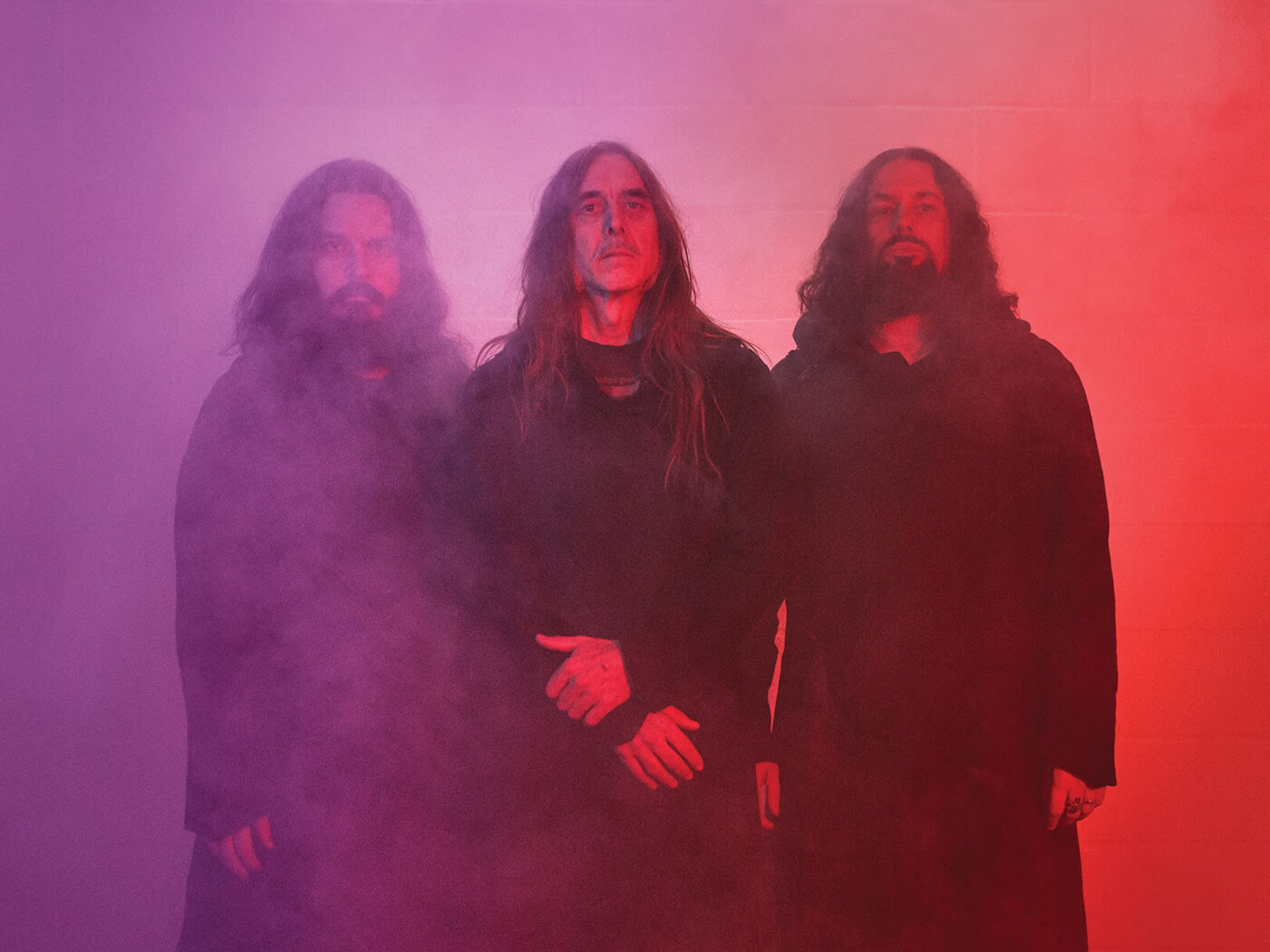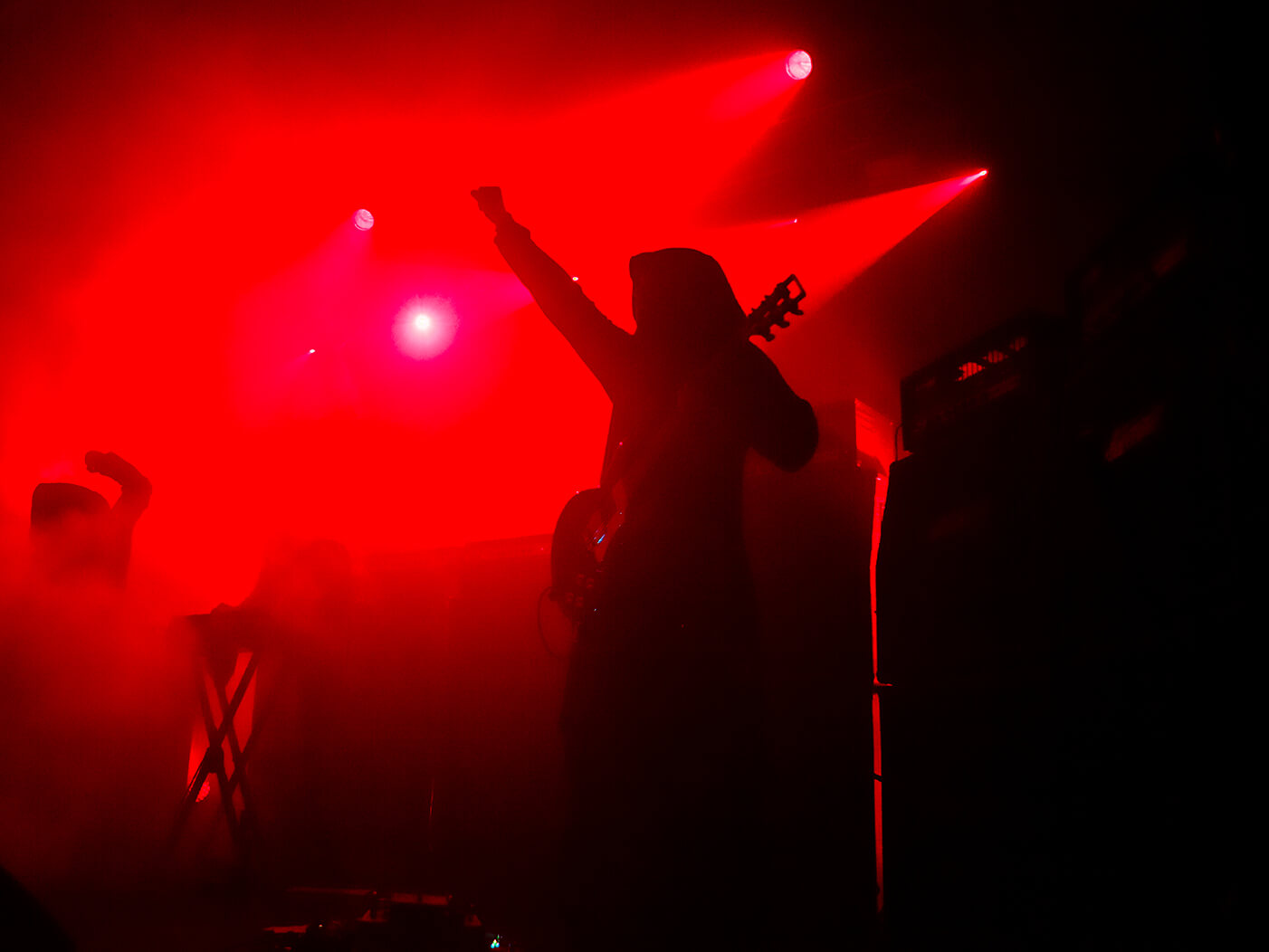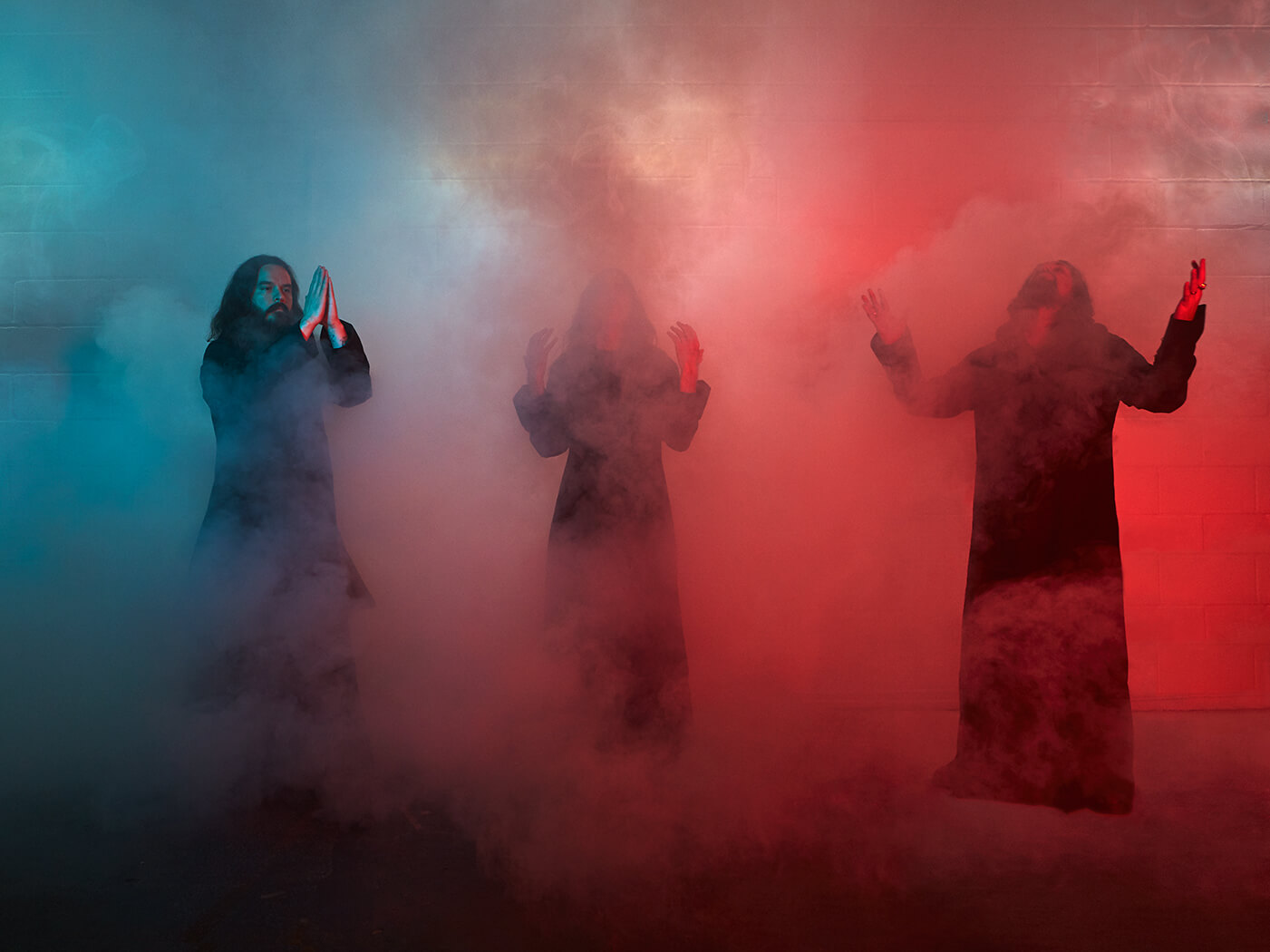Sunn O))) talks recording Life Metal with tape maestro Steve Albini
“I like working with Albini because he approached Sunn O))) in a way that a cinematographer would,” says Greg Anderson.

Image: Ronald Dick
It has been over two decades since drone lords Greg Anderson and Stephen O’Malley first began quaking venues as Sunn O))), but they’re showing no signs of slowing down. 2019 is set to be a massive year for the band, with two album releases – the first, Life Metal, is out today – and a string of live shows announced.
Life Metal is Sunn O)))’s eighth studio album, and was mixed and recorded on tape by the illustrious engineer Steve Albini (Nirvana, Pixies, Shellac). MusicTech recently caught up with Anderson and O’Malley to pick their brains about the analogue recording process and what it was like to work with the icon.
Going into Life Metal, did you guys have a clear idea of what you wanted in terms of sound?
Stephen O’Malley: Yea, somewhat. We’ve been working on our tone and obsessing over it for 20 years now. Each of us has our own preferred guitars and pedals. The front-end for us is different but the amps are similar, they’re the ones we’ve always used in this band.
Greg Anderson: I’d say the amps are probably the main part of the band’s. We’ve spent a lot of time doing demos of the pieces for the record and during that process, we explored a lot of different pedal configurations, amps, and dynamics as well. In the pre-production sessions for the album, we kind of went into that a bit more, and then in the studio with Steve Albini, we also spent a lot of time dialling the right tones for each detail.
We understand that Life Metal is the first time you guys have ever done all-tape production ever. What inspired this decision?
S: We pre-recorded on tape before on several records actually, but we’ve never gone on all the way through the mastering on tape. We’ve been mixed on tape before on the ØØ Void record, but in the last few times we’ve worked on tape, it’s been mainly for tracking. To get that first colour of tape, and then move to Pro Tools or whatever on the computer for arranging, and then mixdown.
When we decided to work with [Albini] – and of course that’s his method – he works on tape all the way. Working with him dictated that, but it was something we were excited to do as well. It changed a little, with regard to our method of recording, mixing and arranging.
So would you say that the decision to go with all-tape production was more to do with workflow than sound?
G: Both. And Albini’s method, he let it be known, or reiterated, that when we got into the studio there would be no computers in the control room. We would be recording on tape, and we would make any edits necessary with tape. But that’s why we went to him as well, we wanted to work with him and his method and have that experience.
One of the things that was eye-opening for me personally was that there was no difference in workflow speed. What we were able to do in terms of tracking was so transparent with [Albini]. He’s just a master of that studio instrument, it’s really super convenient for us to focus on the music. We didn’t have to wait for files to defragment or relink. It was just immediate, and I think the decision-making was more immediate as well, because that method is so based on the present moment rather than going backwards or keeping things in reserves.
Making executive decisions felt very liberating actually – to make the decisions, be confident, play as well as you can, and know that it’s gonna sound as good as possible because Albini is the master of that capture. So it felt invigorating, and of course, we had full faith and trust in him.
Apart from his mastery of the equipment, is there anything else that he brings to the table that you feel no one else can?
G: These are masters of sound, and anyone at that level has got their own character, and strong character about how they do things, approach things and talk about things. That character’s on its own and I won’t compare it to anyone else. But you can say that [Albini’s] a master-level guy with sound, and that identity is very particular. That’s because they’ve been inside of it for so long, working, studying and mastering the techniques and possibilities.
I like working with [Albini] because he approached Sunn O))) in a way that a cinematographer would. Our sound and setup were established and he was just capturing it in as realistic a manner as possible. There wasn’t a lot of embellishment with the backstory or anything like that. It felt like that was what we were doing. That’s what our tone is. It really comes across in the record that way. Rather than being super involved artistically in the song or tone composition, he just catalysed us to be able to flow with the ideas.
S: Yeah, it’s that sort of anti-producer thing which was actually inspiring in a way. That instilled this sort of motivation in us and this confidence to do what we did. By not having him pick apart each track or even make any sort of comments at all about the arrangement of the songs, it was like “well, we’re all good and confident in what we do here, let’s execute something like that”. That was inspiring for me with him.

What’s behind the titles Life Metal and Pyroclasts?
S: Well, I think with some titles in general, they’re putting language on something that’s essential abstract music, however composed it is. When you put language on it, it creates a different impression for the person on the other side. The interviews we’ve been doing, people have always been asking about the title, and I think it’s interesting to see what someone’s impression is, rather than what we think. Pyroclasts is really straightforward. It refers to lava flow, so that’s kind of a metaphorical title. I think Life Metal has many layers, and it can be more of a personal interpretation
G: I’ve been asked this question as well. It has a personal meaning for me and that’s going to be different for each person. It almost invokes a humorous response to it. But, I think it also can go deeper and represent something ambiguous, taking on different meanings for different people. For me, as I’ve gotten older and things have changed in my life, a lot of things have changed in a happy and positive way. For me personally, my perception of the music that we were writing and that was coming out of us in this record had a lot more light to it than the past stuff we’d written together, which had more of a darkness to it. My interpretation of titles is a representation of the mood of the music to me.
What was behind the decision to release two studio albums in a year?
S: Well, both of those records are from the Albini session and we were recording them as one session. And at some point, we had to curate the music as we didn’t want to release a triple LP. We think that’s really asking too much of our fans, even though some of them would’ve been super excited for it.
The Life Metal album definitely had more composed pieces of music, and the Pyroclasts LP was more free-spirited, and experimental in nature. I think it’s also interesting to get some space between those ideas for the listener so they can have the pleasure and be motivated through encountering music. They can have the pleasure of making that connection themselves, rather than packaging it as this big completion or sessions type of thing. And the music of Life Metal are pieces that Greg and I arranged in the pre-production session – in our writing sessions – and came to the studio pretty prepared with. So, Pyroclasts consists of the more spontaneous pieces that we worked on in the studio.

You guys have spoken about the challenges of recreating that live feeling on a record. How do you overcome that?
S: Well, deciding to work with [Albini], that was an attempt to try to overcome that. I won’t say it’s something we’ve struggled with, but it’s been a challenge over the years to make records that sound like the live thing. There are so many limitations with that, basically due to people’s listening habits and what’s possible with headroom and recording techniques. But we’ve come close a few times. Anyway, a record for us is something I always saw being different to live.
G: I’ve almost felt that it’s a two-headed beast, where there are the album and recordings as one representation of the band, and the live shows are something different. I think it’s great and cool to have this in two sides, but I think with this album it was about trying to capture some of the spirit as well and the aesthetic of the live performances and the sort of the subtle nuances that happens during a live performance, with each instrument reacting and interacting with each other. This is I think [Albini] was successful in capturing.
So in that case, what would you say was the biggest challenge with recording this record?
S: Probably logistics? We had people from all around on the record, and we’re a DIY operation, so getting everything together is a challenge. Getting all the people to Chicago and all the gear, getting the financing together, all sides of it. That’s a challenge, but a real practical one as well. The people involved were all motivated. Once you’re there, I think the flow of the session completely outweighed any logistical challenge.
G: It’s so comfortable working there. Waking up, having some coffee, going downstairs and getting to work, everything felt really relaxed and comfortable. Albini was also really easy-going with everything, and I felt that there was no pressure at all. Sometimes in the studio, you feel some pressure, but often times we’ve been fortunate because this hasn’t been the case. It was really relaxing to actually work on the album and the sessions.
S: Because the workflow was so fluid, we got to spend all of that time just focusing on playing and the artistic side, once we were there. And then spending the little time off we had to enjoy the company. I think Albini set it up really well for us in that way. He was like the pilot of the session.
If someone wanted to achieve the Sunn O))) sound on a budget, what would you recommend?
S: Well, we were on a budget, and that’s how we came to the model T. It’s hard to believe now, but those amps were affordable in the 90s, like $200 to $300 a piece. I’m pretty curious about the regional tube amplifier history, especially in the US and England.
I’ve been to Israel before, and there’s a whole regional tube amp history there too. I’ve played some interesting amplifiers there, basically coming out of the Fender and Marshall tradition.
G: That’s a good point. You said that we were on a budget. To put it in perspective, Sunn was kind of the Peavey of the north-west. They were a regional company that was making amplifiers for a reasonable price for people. I’m talking about the solid state gear in the 80s, but it was designed and marketed to beginners or a guitar player on a budget who couldn’t afford a Marshall or a Fender. Especially a Marshall, because those were more expensive and they had to be imported from England.
It’s funny that there are all these different tube amps which were small-run and regional. There’s a company called Earth from Arizona that made these great massive tube amps that were really inexpensive, cheaper than a Marshall.
I think for us, it’s about really focusing and obsessing over your tone. That’s how we came to where we are now with our sound. I think if you want to get the Sunn O))) sound, it’s more about getting your own sound that works for you. To us, we really want to put the focus on the amplifier.
Life Metal is out on Southern Lord Records now.